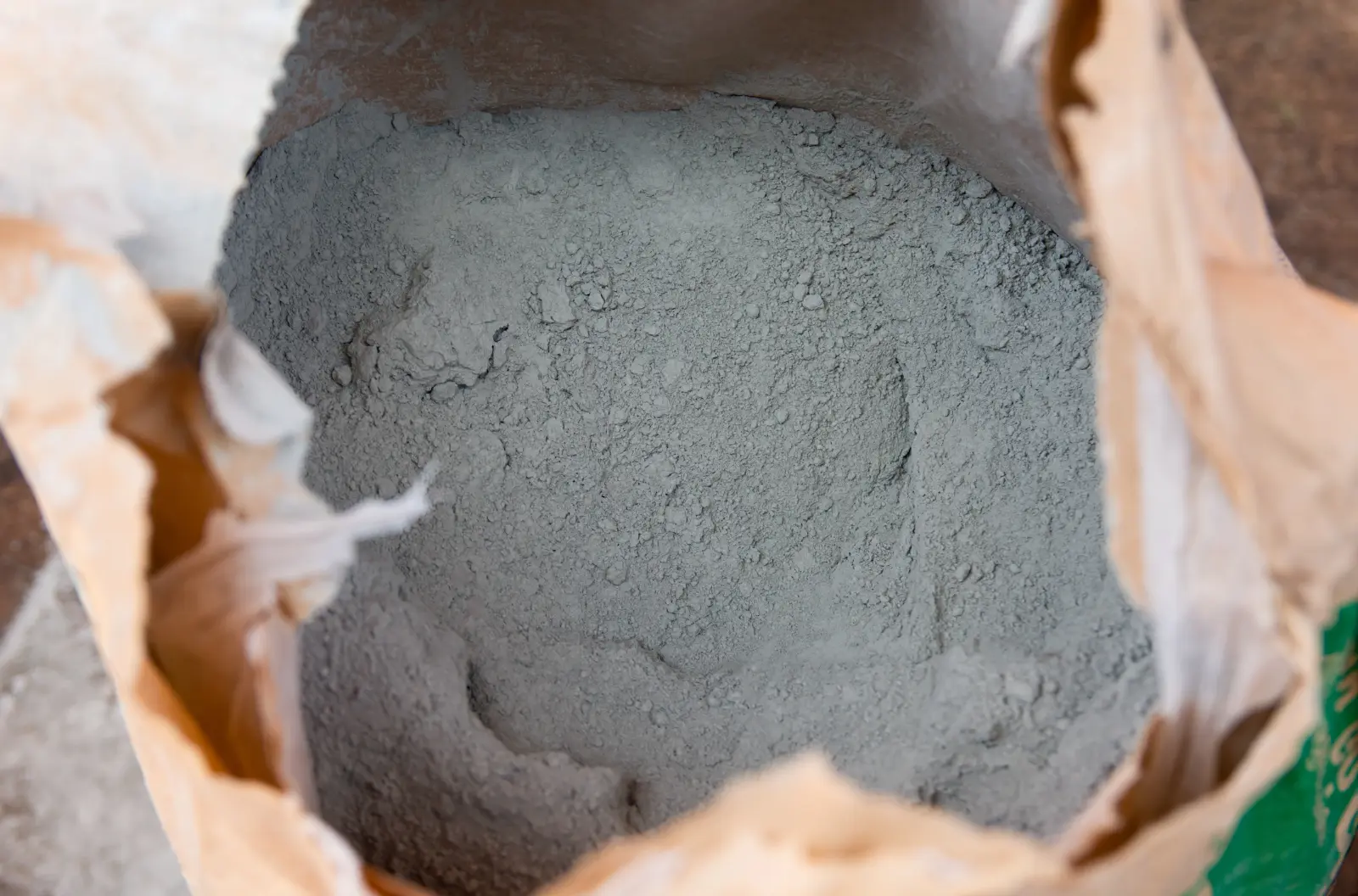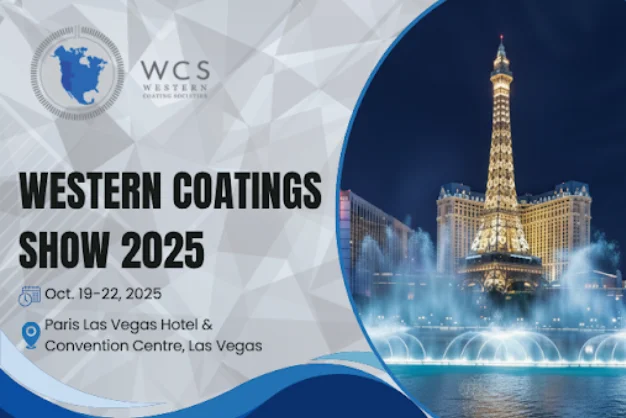Portland Pozzolana Cement (PPC) is a type of blended cement that is created by combining Ordinary Portland Cement (OPC) with pozzolanic materials. Pozzolanas are natural or artificial materials containing silica in reactive form. Common pozzolanas used in PPC include fly ash, volcanic ash, calcined clay, and silica fumes.
The use of pozzolanas in PPC also contributes to environmental sustainability. By incorporating industrial by-products like fly ash, PPC reduces the carbon footprint of cement production and helps in waste management.
In summary, Portland Pozzolana Cement is a durable, environmentally friendly cement option that is widely used in modern construction due to its enhanced properties and sustainability benefits.
Portland Pozzolana Cement (PPC) is produced by blending Ordinary Portland Cement (OPC) with pozzolanic materials. The production process involves several key steps, each contributing to the final product’s quality and characteristics.
The primary raw materials for PPC production are:
Clinker: Clinker is the primary component of OPC, produced by heating limestone, clay, and other materials in a kiln.
The clinker, produced during the manufacture of OPC, is ground into a fine powder. This step is crucial as the fineness of the clinker affects the overall strength and hydration rate of the cement.
Once the clinker is finely ground, it is blended with the selected pozzolanic materials. The proportion of pozzolanas typically ranges from 15% to 35%, depending on the desired properties of the final product. The blending process must be thorough to ensure a uniform mixture.
The blended mixture of clinker and pozzolanas is then ground together to achieve a fine, homogenous powder. This grinding process is essential as it determines the particle size distribution of the cement, which in turn influences the cement’s strength, setting time, and overall performance.
During the final grinding process, a small amount of gypsum is added to the mixture. Gypsum controls the setting time of the cement, ensuring that it does not set too quickly when mixed with water.
Throughout the production process, stringent quality control measures are applied to ensure that the final product meets the required standards. The chemical composition, fineness, and setting time are all carefully monitored to produce consistent and reliable Portland Pozzolana Cement.
After grinding, the finished PPC is stored in silos and then packed into bags or delivered in bulk, ready for use in various construction projects. The packaging is designed to protect the cement from moisture and contamination during transportation and storage.
The production of Portland Pozzolana Cement involves careful selection and blending of materials, followed by precise grinding and quality control processes. The addition of pozzolanic materials not only enhances the cement’s durability and environmental friendliness but also contributes to the overall sustainability of the construction industry.
Portland Pozzolana Cement (PPC) offers several significant benefits that make it a preferred choice in many construction projects. These benefits stem from its unique composition, which includes pozzolanic materials that enhance the cement’s overall performance and sustainability.
One of the primary advantages of PPC is its enhanced durability. The pozzolanic materials in PPC react with calcium hydroxide released during the hydration of cement, forming additional calcium silicate hydrate (C-S-H). This process increases the density of the cement matrix, making it more resistant to chemical attacks, including sulfate and chloride penetration. As a result, structures built with PPC have a longer lifespan, particularly in aggressive environments like coastal areas, sewage treatment plants, and industrial sites.
PPC has lower permeability compared to Ordinary Portland Cement (OPC). The pozzolanic reaction fills the pores in the cement paste, reducing the penetration of water and other harmful substances. This property makes PPC ideal for structures exposed to water, such as dams, bridges, and marine structures, where reduced permeability is critical for longevity.
PPC is an eco-friendly cement option. The use of pozzolanic materials, often industrial by-products like fly ash, reduces the amount of clinker required in cement production. This, in turn, lowers the carbon dioxide emissions associated with cement manufacturing. By using PPC, builders contribute to reducing the overall environmental impact of construction projects.
Portland Pozzolana Cement is generally more cost-effective than Ordinary Portland Cement. The inclusion of pozzolanic materials, which are often less expensive than clinker, reduces the overall cost of the cement. Additionally, the enhanced durability and longevity of structures built with PPC can lead to lower maintenance and repair costs over time.
PPC offers better workability compared to OPC. The finer particles and the pozzolanic reaction improve the cohesiveness of the concrete mix, making it easier to work with during construction. This property is particularly beneficial in large-scale projects where ease of application and smooth finishes are important.
The heat of hydration in PPC is lower than in OPC, reducing the risk of thermal cracking in large concrete pours. This makes PPC a suitable choice for massive structures like dams, where controlling temperature rise is crucial to prevent cracks and ensure structural integrity.
The benefits of Portland Pozzolana Cement—ranging from improved durability and reduced permeability to environmental sustainability and cost-effectiveness—make it an excellent choice for various construction applications. Its ability to enhance the performance of concrete, particularly in challenging environments, underscores its importance in modern construction practices.
Portland Pozzolana Cement (PPC) is highly versatile, making it suitable for a wide range of construction applications. Its unique properties, such as enhanced durability, reduced permeability, and environmental sustainability, make it an ideal choice for various types of projects. Here are some of the key applications of PPC:
PPC is commonly used in the construction of residential and commercial buildings. Its improved workability and resistance to chemical attacks make it suitable for foundations, walls, floors, and roofs. The long-term durability of PPC ensures that these structures remain strong and resilient over time, even in areas with challenging environmental conditions.
One of the most significant applications of PPC is in marine structures, such as piers, jetties, and breakwaters. The reduced permeability and high resistance to sulfate and chloride attacks make PPC ideal for environments exposed to seawater. The cement’s ability to withstand the harsh conditions of marine environments helps in prolonging the life of these structures, reducing maintenance and repair costs.
In industrial settings, where structures are often exposed to chemicals and other aggressive agents, PPC is a preferred choice. It is used in the construction of silos, storage tanks, chimneys, and cooling towers. The cement’s durability and resistance to chemical attacks ensure that these structures can withstand the harsh conditions typically found in industrial environments.
The durability and strength of PPC make it an excellent choice for the construction of bridges and flyovers. These structures are subjected to heavy loads, weather conditions, and exposure to chemicals from vehicles. PPC’s ability to resist these challenges ensures the long-term stability and safety of bridges and flyovers.
PPC is commonly used in sewage and water treatment plants, where structures must withstand constant exposure to water and corrosive substances. The cement’s low permeability and high resistance to chemical attacks make it ideal for these applications, ensuring the integrity of the treatment plants over time.
PPC is also used in road construction, particularly in the laying of concrete pavements. Its improved workability and durability make it suitable for creating smooth, long-lasting road surfaces that can withstand heavy traffic and adverse weather conditions. The cement’s resistance to cracking and wear extends the lifespan of roads, reducing the need for frequent repairs.
For large-scale concrete works, such as the construction of dams, retaining walls, and heavy foundations, PPC is a preferred choice. Its low heat of hydration minimizes the risk of thermal cracking, which is a common issue in mass concrete pours. PPC ensures that these massive structures are strong, stable, and durable.
Portland Cement (OPC):OPC is made primarily from clinker, which is produced by heating limestone, clay, and other materials in a kiln. The clinker is then ground into a fine powder, with a small amount of gypsum added to control the setting time.
Portland Pozzolana Cement (PPC):PPC is produced by blending OPC with pozzolanic materials such as fly ash, volcanic ash, or silica fume. These pozzolanas react with calcium hydroxide in the cement to form additional calcium silicate hydrate (C-S-H), which enhances the properties of the cement.
Strength Development:OPC achieves high early strength, making it ideal for projects that require quick setting and early removal of formwork. However, PPC, while slower in initial strength development, continues to gain strength over time, often surpassing OPC in long-term strength.
Durability:PPC offers greater durability than OPC, particularly in environments exposed to aggressive chemicals like sulfates and chlorides. The pozzolanic reaction in PPC reduces the amount of free lime, making the concrete denser and less permeable.
Permeability:PPC has lower permeability compared to OPC, which means it better resists water ingress and protects reinforced concrete from corrosion. This property is particularly beneficial in marine structures and areas with high groundwater levels.
Heat of Hydration:OPC generates more heat during hydration, which can lead to thermal cracking in large concrete pours. PPC, with its lower heat of hydration, is less prone to this issue, making it suitable for mass concrete structures.
Workability:PPC generally offers better workability than OPC due to its finer particles and the pozzolanic reaction. This makes PPC easier to mix and apply, resulting in a smoother finish.
Portland Cement (OPC):OPC is commonly used in projects that require fast construction and early strength, such as in precast concrete, road pavements, and high-rise buildings. It is also preferred in cold weather conditions where rapid strength development is necessary.
Portland Pozzolana Cement (PPC):PPC is ideal for structures that require long-term durability and resistance to aggressive environments, such as marine structures, dams, bridges, and sewage treatment plants. Its lower permeability and better workability also make it suitable for large-scale concrete works and residential buildings.
Fast construction projects where early strength is critical. Cold weather concreting to achieve quick setting and curing. Precast concrete production where rapid formwork turnover is needed. Long-term durability and resistance to chemical attacks are priorities. Large-scale concrete works, such as dams and retaining walls, where low heat of hydration is important. Marine and industrial structures exposed to harsh environmental conditions. Sustainable construction practices, as PPC uses industrial by-products like fly ash. Pozzolanic materials play a crucial role in the production of Portland Pozzolana Cement (PPC), enhancing its properties and making it more suitable for various construction applications. These materials, when mixed with Ordinary Portland Cement (OPC), react with calcium hydroxide to form additional compounds that improve the durability, strength, and overall performance of the cement. Here’s an overview of the most common pozzolanic materials used in PPC and their roles in enhancing cement properties.
Fly ash is one of the most widely used pozzolanic materials in the production of PPC. It is a by-product of coal combustion in thermal power plants and contains high levels of silica and alumina.
Role in Cement:Fly ash improves the workability of the concrete mix and enhances the long-term strength of the cement. It reduces the heat of hydration, making PPC less prone to thermal cracking in large pours. Fly ash also decreases the permeability of concrete, providing better resistance to water ingress and chemical attacks, particularly from sulfates and chlorides. Volcanic ash, also known as natural pozzolana, is a naturally occurring material found in volcanic regions. It has been used as a pozzolanic material since ancient times.
Role in Cement:Volcanic ash enhances the durability of PPC by contributing to the formation of additional calcium silicate hydrate (C-S-H), which strengthens the cement matrix. It also improves the cement’s resistance to chemical attacks, making it ideal for use in marine structures and environments with aggressive soil conditions. Silica fume is an ultra-fine by-product of the production of silicon or ferrosilicon alloys. It is composed of amorphous silica, which has a high reactivity with calcium hydroxide.
Calcined clay is a type of clay that has been heated to remove water and activate its pozzolanic properties. Metakaolin is a common type of calcined clay used in PPC.
Role in Cement:The addition of silica fume to PPC Calcined clay enhances the early strength of PPC and improves its resistance to chemical attacks, particularly from acids and sulfates. It also reduces the porosity of the concrete, leading to lower permeability and increased durability. Calcined clay is especially useful in applications where high early strength and durability are critical. Rice husk ash is a by-product of the rice milling industry. It is rich in silica and has pozzolanic properties when properly processed.
Role in Cement:Rice husk ash improves the strength and durability of PPC by contributing to the formation of additional C-S-H. It also reduces the cement’s permeability, making it more resistant to water penetration and chemical attacks. The use of rice husk ash in PPC also promotes sustainability by recycling agricultural waste. The use of pozzolanic materials like fly ash, volcanic ash, silica fume, calcined clay, and rice husk ash in Portland Pozzolana Cement significantly enhances its properties. These materials improve the cement’s strength, durability, and resistance to chemical attacks while reducing permeability and the risk of thermal cracking. By incorporating these pozzolanas, PPC becomes a more versatile and sustainable option for a wide range of construction projects.
Portland Pozzolana Cement (PPC) is widely recognized for its numerous advantages, particularly in enhancing the durability and sustainability of construction projects. However, like any material, it also has certain disadvantages that must be considered. Understanding both the pros and cons of PPC will help in making informed decisions about when and where to use it.
Resistance to Chemical Attacks: PPC is highly resistant to chemical attacks from sulfates, chlorides, and other aggressive substances. This makes it ideal for use in structures exposed to harsh environments, such as marine structures, sewage treatment plants, and industrial facilities.
Reduced Permeability:The pozzolanic reaction in PPC reduces the permeability of concrete, which helps prevent water ingress and protects against corrosion of reinforcement bars. This is particularly beneficial in structures where long-term durability is critical.
Lower Carbon Footprint:PPC production uses industrial by-products like fly ash, reducing the amount of clinker required. This results in lower carbon dioxide emissions compared to Ordinary Portland Cement (OPC), making PPC a more environmentally friendly option.
Utilization of Waste Materials:By incorporating pozzolanic materials such as fly ash and rice husk ash, PPC promotes the recycling of industrial and agricultural waste, contributing to sustainable construction practices.
Better Mixing and Application:PPC generally offers better workability than OPC, making it easier to mix and apply. This results in a smoother finish and improved handling during construction, especially in large-scale projects.
Lower Initial Costs:The inclusion of less expensive pozzolanic materials in PPC reduces the overall cost of cement production. Additionally, the long-term durability and reduced maintenance requirements of PPC structures can lead to cost savings over the life of the project.
Low Heat of Hydration:PPC generates less heat during the hydration process compared to OPC, reducing the risk of thermal cracking in mass concrete pours. This makes it suitable for large structures like dams and bridges.
Delayed Early Strength:PPC generally develops strength more slowly than OPC, especially in the early stages. This can be a drawback in projects where rapid strength gain is necessary, such as in precast concrete production or in cold weather concreting.
Extended Curing Period:Due to the pozzolanic reaction, PPC tends to have a longer setting time than OPC. This may require longer curing periods, which can delay the construction schedule in fast-track projects.
Early Load-Bearing Capacity:The initial strength of PPC is lower than that of OPC. This can be a limitation in situations where the concrete needs to bear loads shortly after pouring, such as in high-rise construction or when formwork needs to be removed quickly.
Dependence on Pozzolanic Material Quality:The quality and reactivity of the pozzolanic materials used in PPC can vary, affecting the overall performance of the cement. Inconsistent quality of pozzolanas can lead to variability in the strength and durability of the concrete.
When deciding whether to use Portland Pozzolana Cement, several factors should be considered:
Project Timeline:If the project requires quick strength development and early load-bearing capacity, OPC may be a better choice. However, if long-term durability and reduced maintenance are more important, PPC is ideal.
Environmental Conditions:For structures exposed to aggressive chemicals, marine environments, or high moisture levels, PPC’s enhanced durability and chemical resistance make it the preferred option.
Sustainability Goals:If reducing the carbon footprint and promoting sustainable construction practices are key objectives, PPC is a more environmentally friendly option due to its lower carbon emissions and use of recycled materials.
Cost Considerations:While PPC may offer lower initial costs and long-term savings, the longer setting time and slower strength development might increase the overall construction time, potentially affecting the project’s budget.
Portland Pozzolana Cement (PPC) is a valuable material in modern construction, offering significant advantages in durability, environmental sustainability, and cost-effectiveness. Its enhanced resistance to chemical attacks and reduced permeability make it an ideal choice for structures exposed to harsh environments, while its lower carbon footprint supports sustainable building practices. However, PPC’s slower strength development and longer setting times are important considerations, especially in projects with tight schedules or immediate load-bearing requirements.
Understanding the advantages and disadvantages of PPC allows builders and engineers to select the most appropriate cement for their specific needs, ensuring both the immediate performance and long-term durability of their projects. By carefully weighing the benefits of PPC against its potential limitations, construction professionals can make informed decisions that contribute to the success and sustainability of their work.





